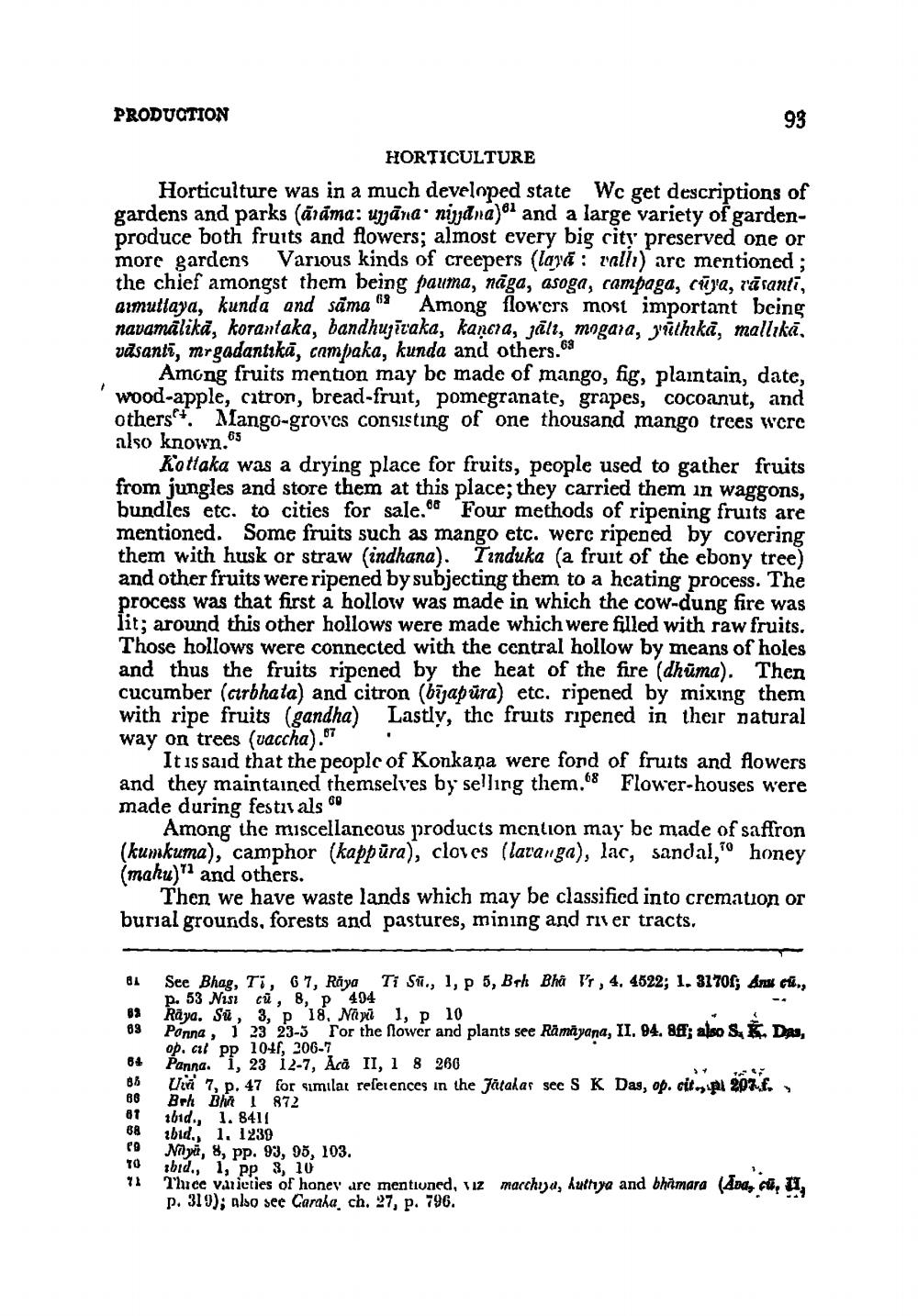________________
PRODUCTION
93
HORTICULTURE Horticulture was in a much developed state Wc get descriptions of gardens and parks (ārāma: ujana nijjdna) and a large variety of gardenproduce both fruits and flowers; almost every big city preserved one or more gardens Various kinds of creepers (laya : ralli) are mentioned ; the chief amongst them being pauma, nāga, asoga, campaga, oriya, rāranti, aimutlaya, kunda and samas Among flowers most important being navamälikā, korantaka, bandhupīraka, kaņcia, jāli, mogara, g'athika, mallıkā, vdsanti, mrgadantıkā, campaka, kunda and others.68
Among fruits mention may be made of mango, fig, plaintain, date, wood-apple, citron, bread-fruit, pomegranate, grapes, Cocoanut, and others + Mango-groves consisting of one thousand mango trees were also known.65
kottaka was a drying place for fruits, people used to gather fruits from jungles and store them at this place; they carried them in waggons, bundles etc. to cities for sale. Four methods of ripening fruits are mentioned. Some fruits such as mango etc. were ripened by covering them with husk or straw (indhana). Tinduka (a fruit of the ebony tree) and other fruits were ripened by subjecting them to a hcating process. The process was that first a hollow was made in which the cow-dung fire was lit; around this other hollows were made which were filled with raw fruits. Those hollows were connected with the central hollow by means of holes and thus the fruits ripened by the heat of the fire (dhūma). Then cucumber (arbhata) and citron (bījapūra) etc. ripened by mixing them with ripe fruits (gandha) Lastly, thc fruits ripened in their natural way on trees (vaccha).07 .
It is said that the people of Konkaņa were fond of fruits and flowers and they maintained themselves by selling them.68 Flower-houses were made during festu also
Among the miscellancous products mention may be made of saffron (kumkuma), camphor (kappūra), cloves (laranga), lac, sandal," honey (mahu)" and others.
Then we have waste lands which may be classificd into cremation or burial grounds, forests and pastures, mining and river tracts,
See Bhag, Ti, 67, Raya Ti St., 1, p 5, Bek Bha l'r , 4, 4522; 1. 3170f; Smuci., p. 53 Nisa cũ , 8, p 494 Raya. Su, 3, p 18, Nart 1, p 10 Ponna, 1 23 23-5 for the flower and plants see Rāmāyana, II. 84. 8ff; also op. cul pp 1041, 206-7 Panna. i, 23 i 2-7, Acă II, 1 8 260 Uva 7, p. 47 for similar references in the Fatahas see S K Dag, op. cit.pl 20%.f. Bph Bhi | 872 1bid., 1. 8411 ibid. 1. 1230 Niyi, 8, pp. 93, 95, 103. ibid., 1, pp 8, 10 Thce varieties of honey are mentioned, viz macchiya, kutnya and bhimara (Andy cl, II, p. 319); also see Garaha. ch. 27, p. 796.




